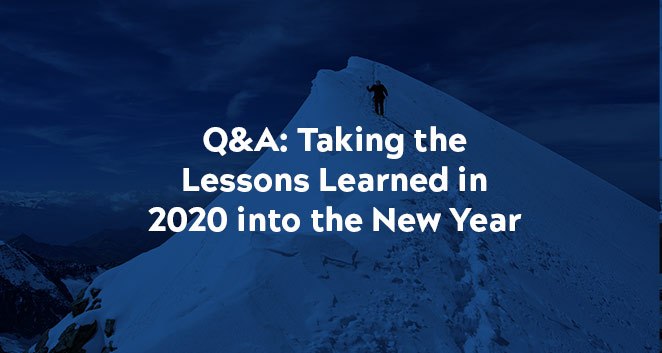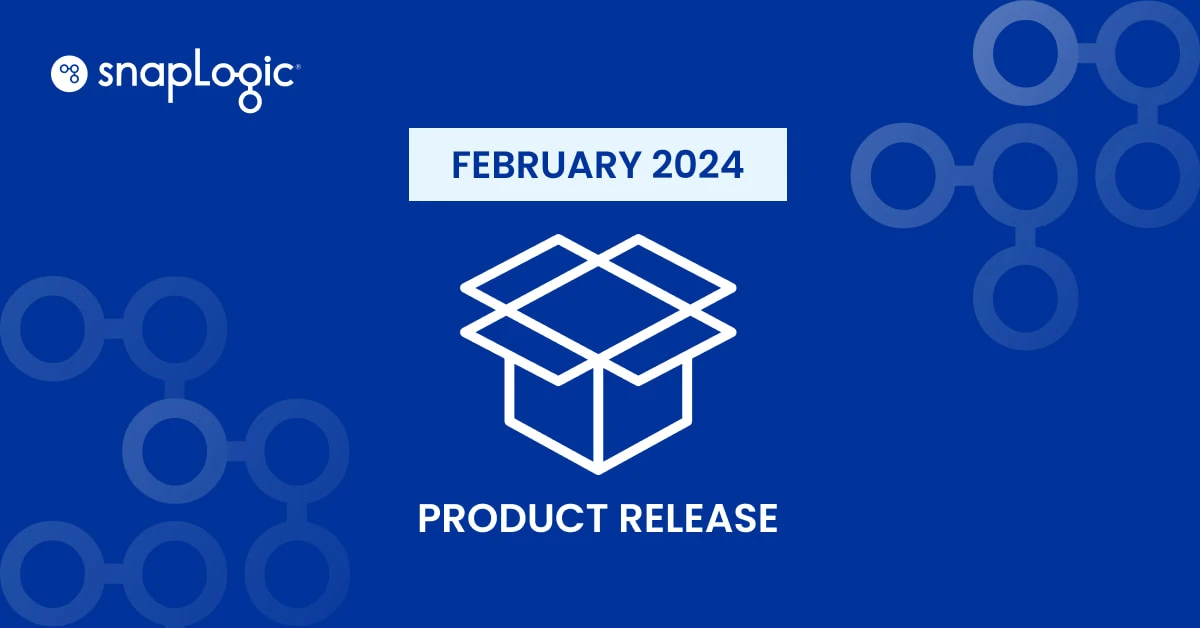As people’s thoughts move to putting 2020 behind us and thinking of the promise that the new year can hold, we here at SnapLogic wanted to take a moment to wish you all a festive holiday season and a Happy New Year.
With that in mind, I recently sat down with a few leaders on our SnapLogic team to get their insights into what 2021 will bring. Brad Drysdale, our Field CTO; Greg Benson, our Chief Scientist; and Mark Gibbs, our Senior Director of Product Management took a look into their collective crystal ball and shared their thoughts and predictions for the next 12 months.
Here’s my interview with the three of them:
If there’s one thing this past year has shown us it’s the importance of enabling your employees to be self-sufficient and productive – and giving them the right tools to do so. Low-code platforms, self-service interfaces, and AI-powered automations were in high demand by a newly remote workforce. Do you see these trends continuing in 2021?
Greg: Low-code platforms will increasingly be used by non-programmers to perform business process automation. This will be possible due to continued user experience advancements in low-code and no-code systems that are used to integrate applications and data. This trend will take pressure off IT departments and allow business users to improve efficiency on their timelines. As a result, automation project schedules will shorten from months to weeks.
Brad: I think that low-code development will mature to become more “intent-driven.” Today, a business/domain owner uses higher-level user experience tooling to piece together a flow of data between various systems in order to achieve an integrated outcome. This will mature further in 2021 where less of the manual steps are needed to be undertaken by a user, and more of the intent behind the outcome is captured and automated into pipelines.
In addition to app integration and process automation, we’re seeing a ton of activity in data automation, warehousing, and analytics. How do we ensure quality, real-time data gets to business users when they need it, and what role does AI/ML play in this?
Mark: Making data available to those in the business who need it at the time they need it is crucial to enabling the data-driven enterprise. Replicating schema and data from critical business systems into a cloud data warehouse ensures the right data is available at the right time. I see the understanding of just how important this is growing in 2021, leading companies that haven’t already done so to invest heavily in ensuring their data is correct, and easily available.
Brad: I believe that data in motion will come full circle to fuel digital initiatives. To date, data automation has mostly been about collecting “exhaust” to power BI and analytics outcomes. Going forward, the “exhaust” (and more of it than ever before) will be captured and used to feed customer initiatives in order to deliver better, more personalized outcomes and value propositions.
Greg: Businesses will invest more in data collection and curation in support of AI and ML initiatives. Current AI and ML technology is powered by useful and large-scale data. A big barrier to entry for organizations is large-scale source data that can be used to train models. Cloud-based data services make it easier to collect event and sensor data that can be used in model building to support customer experiences or improve internal business efficiency.
Brad: I think that AI/ML will actually play a bigger role in 2021 in helping make more and more tasks “invisible.” In our integration space, AI to date has been primarily around learning and assisting to streamline complex integration tasks (such as data mapping, for example). In 2021, ML will continue to improve to the point where the AI will be doing less “assisting” and more “augmenting” by actually undertaking tasks which today are normally done by a human, with AI “assistance,” via suggestions. As the AI does more and more of this, these tasks will become invisible and be “just done for you,” bringing us one step closer to everyone’s goal: autonomous, self-driving integration.
Ok, let’s shift gears a bit then. With the dawn of 2021 bringing the proverbial “light at the end of the tunnel,” how do you see companies’ priorities shifting when the pandemic’s chaos starts to wane?
Brad: Despite having weathered the disruption and uncertainty caused by the pandemic, organizations will still be on edge. Disruption will be absolutely expected at any point, and businesses will need to ensure they are battle-ready. It won’t be enough anymore to have a 3-5 year digital transformation plan. There will need to be a constant sense of urgency around being ready to adapt, pivot, and defend at a moment’s notice.
Greg: I agree, and I think as a part of this, businesses will accelerate modernization initiatives that were borne out of the pandemic. The pandemic was a tipping point for many companies that were putting off modernization efforts, such as moving more operations to the cloud or investing more in automation.
Many businesses learned that much of their workforce can work from home and more interactions than ever now take place online via services like Slack and Zoom. Taken together, most businesses have turned a corner and won’t look back. Interaction and collaboration “at the office” will be forever different due to these accelerated modernization efforts.
Mark: It’s true – remote work is here to stay. Many businesses scrambled to accommodate a remote workforce, but once they overcame the initial challenges, they started to see the benefits from both a company and a social perspective.
As an example, reducing the time spent commuting enables employees to have more focused time on the task at hand as well as providing the social benefit to the employee of a more balanced life (not to mention reducing traffic congestion and one’s carbon footprint). Companies can save by reducing their physical footprint in centralized office spaces.
So with this year having a very profound effect on what the definition of work and the office really is, are there any other trends borne out of 2020 that we’ll see continue to play out in 2021 and beyond?
Brad: Well, looking beyond the immediate makeup of the workplace, I think that this year has laid the groundwork for longer-term social and environmental responsibility to be taken more seriously. Organizations will start to be measured more closely (primarily by their customers and employees) by their social responsibilities and environmental footprint. To date, these aspects often were enacted at a minimum to please external observers while focusing primarily on key stakeholders (often shareholders).
The key stakeholders will expand to include more than just shareholders and owners, and start to provide more inclusion for community and environmental bodies. Companies will be measured not only by their products and services, but also by their growing responsibilities around recycling, reclaiming, carbon emissions, and social engagement.












